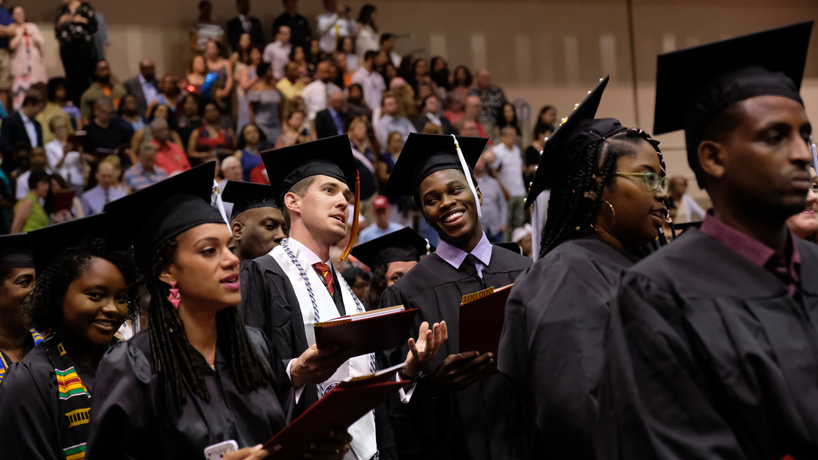
Times Higher Education ranked UMSL sixth in the United States and No. 52 in the world on its list of “Best Universities for Reducing Inequalities.” (Photo by August Jennewein)
Inclusion, access, success and engagement are core values at the University of Missouri–St. Louis, which strives to provide students – regardless of their backgrounds – the opportunity to receive a high-quality and affordable education, so they can determine their own futures.
Times Higher Education is the latest publication to recognize the university’s success meeting that mission. The magazine ranked UMSL sixth in the United States and 52nd in the world on its list of “Best Universities for Reducing Inequalities” in its most recent University Impact Rankings.
“We are an institution of opportunity, and this recognition is proof that we’re living our values,” Chancellor Kristin Sobolik said. “We provide our students with the tools they need to succeed at whatever they choose to do. The education they receive is foundational as they go out to create lasting change in the world.”
U.S. News & World Report previously included UMSL on first-ever list of “Top Performers on Social Mobility.” It was one of only two universities in Missouri to make the list.
Times Higher Education’s University Impact Rankings examined how universities around the world are committing to 17 sustainable development goals outlined by the United Nations. Its rankings included 766 universities from 85 countries.
Specific to the “Best Universities for Reducing Inequalities,” the magazine said it considered the number of first-generation students, the number of students from developing countries, the proportion of students and staff with disabilities, the measures against discrimination and the amount of research a university undertakes on reduced inequalities.
UMSL more than 2,000 first-generation college students among its student body.
Overall, UMSL students had a median family income of $34,093; 46 percent were Pell Grant eligible; and approximately 80 percent received financial aid or grants in the 2019 academic year.
UMSL’s efforts reduce inequality begin before students enroll.
The university also supports more than 800 high school students – and their parents – from across the St. Louis region with its Bridge Program, which provides educational opportunities and information to help them prepare for the transition to post-secondary education. Since 2003, 100 percent of Bridge Program participants went on to attend college.
As an anchor institution in the St. Louis region, UMSL is also committed to engaging with its neighbors, particularly in north St. Louis County, and sharing knowledge and research expertise whenever possible to help them thrive.














